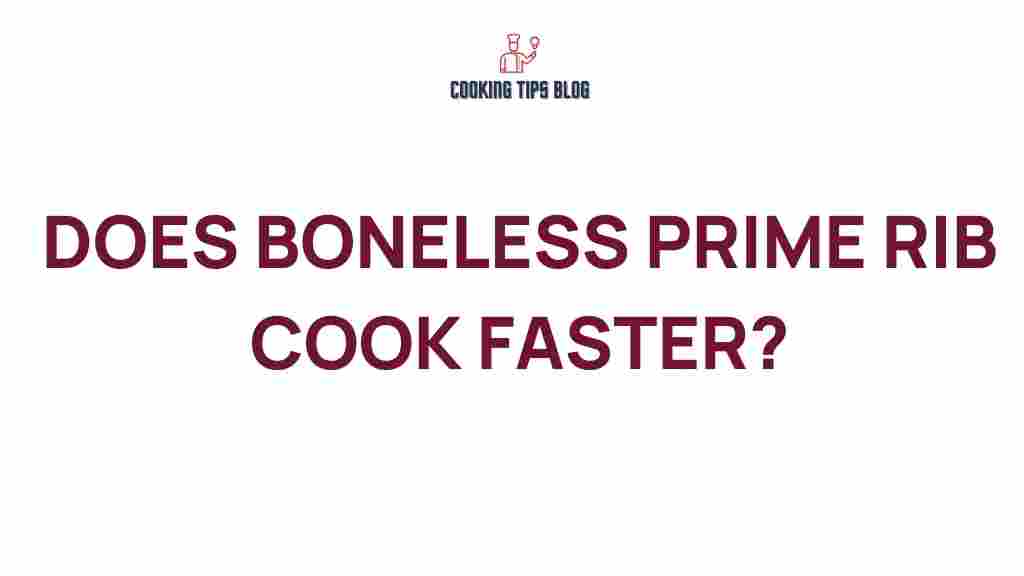Does Boneless Prime Rib Cook Faster? Uncovering the Truth
When it comes to cooking a delicious prime rib, many home chefs are faced with the choice between bone-in and boneless cuts. One common question that arises is whether boneless prime rib cooks faster than its bone-in counterpart. In this article, we will explore the factors that influence cooking time, the benefits of choosing boneless prime rib, and tips for achieving the perfect roast. Let’s dive in!
Understanding Prime Rib Cuts
Before we can answer the question of cooking speed, it’s essential to understand what prime rib is. Prime rib, also known as standing rib roast, is a cut of beef from the rib section of the cattle. It is known for its tenderness and rich flavor. The cut can be found with or without bones, and each option has its own culinary advantages.
Boneless Prime Rib vs. Bone-In Prime Rib
When comparing boneless prime rib to bone-in prime rib, several factors come into play:
- Cooking Time: Generally, boneless prime rib is easier to cook evenly and may take less time due to the absence of bones, which can insulate the meat.
- Flavor: Bones add flavor to the meat, and some argue that cooking with bones enhances the overall taste.
- Presentation: A bone-in prime rib often looks more impressive when served, while a boneless cut is easier to slice and serve.
How Cooking Time Differs
The cooking time for boneless prime rib can indeed differ from bone-in prime rib. Here are a few reasons why:
- Heat Conduction: Bones can act as insulators, slowing down the cooking process. Boneless prime rib allows heat to penetrate the meat more rapidly.
- Size and Shape: Boneless cuts are typically more uniform in shape, leading to more consistent cooking times.
- Cooking Method: The method of cooking (roasting, grilling, or sous-vide) can also influence the cooking time for both types of prime rib.
Cooking Boneless Prime Rib: A Step-by-Step Guide
Now that we’ve established the differences, let’s look at how to cook a boneless prime rib to perfection. Follow these steps for the best results:
Ingredients
- 1 boneless prime rib roast (4-6 pounds)
- Salt and pepper
- 2 tablespoons olive oil
- Fresh herbs (like rosemary and thyme)
- Garlic (optional)
Equipment
- Roasting pan
- Meat thermometer
- Cutting board
- Sharp knife
Instructions
- Preparation: Remove the boneless prime rib from the refrigerator and let it come to room temperature for about 1 hour. This helps in even cooking.
- Seasoning: Preheat your oven to 450°F (232°C). Rub the roast with olive oil, then generously season with salt, pepper, and fresh herbs.
- Roasting: Place the boneless prime rib in a roasting pan and insert a meat thermometer into the thickest part of the roast. Roast at 450°F for 15-20 minutes to create a nice crust.
- Reduce Heat: After the initial searing, reduce the oven temperature to 325°F (163°C) and continue to roast until the meat reaches your desired doneness:
- Rare: 125°F (51.6°C)
- Medium Rare: 135°F (57.2°C)
- Medium: 145°F (62.8°C)
- Medium Well: 150°F (65.6°C)
- Well Done: 160°F (71.1°C)
Troubleshooting Tips for Cooking Boneless Prime Rib
Even with a foolproof recipe, you may encounter some challenges. Here are some troubleshooting tips:
- Meat Too Tough: If your boneless prime rib is tough, it may have been overcooked. Always use a meat thermometer to check for doneness.
- Undercooked Meat: If the meat is undercooked, return it to the oven and continue cooking, checking the temperature frequently.
- Dry Meat: To avoid dryness, ensure the roast is not overcooked and consider using a marinade or basting during cooking.
- Lack of Flavor: If the flavor is lacking, experiment with different seasonings, rubs, or marinades before cooking.
Conclusion
In conclusion, boneless prime rib can indeed cook faster than bone-in prime rib due to its shape, size, and the absence of insulating bones. However, the final cooking time will depend on various factors, including the cooking method and the desired level of doneness. By following the steps outlined in this article, you can achieve a beautifully cooked boneless prime rib that is both tender and flavorful.
For more tips on cooking beef, check out our guide to roasting beef. Remember, whether you choose boneless or bone-in, the key to a successful roast lies in proper preparation, seasoning, and cooking techniques.
Happy cooking!
For further insights on meat cooking techniques, you can visit this helpful resource.
This article is in the category Tools and created by Cookingtipsblog Team
